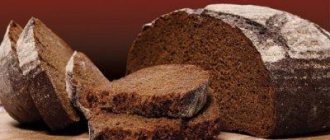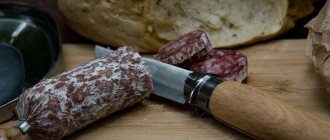Home » Nutrition » Proper nutrition » How many calories can there be in pizza?
How many calories are in pizza depends on its size and the ingredients that were used to prepare the traditional Italian dish.
Manufacturers prepare large, medium and small open-faced flatbreads with various fillings. Before use, it is cut into portions. Manufacturers claim that a small pizza with a diameter of 25 cm weighs 400 g and is cut into 4 pieces. An average open flatbread with a diameter of 30cm weighs 600g and is cut into 6 pieces. A large 35 cm flatbread weighs 800 g and is divided into 8 pieces.
Advice! It is easy for pizza lovers to find out how many calories are in 1 piece of pizza, because on the box the manufacturer often indicates the calorie content of the finished product, the energy value of which ranges from 160 to 270 Kcal.
This number of energy units allows you to have a tasty bite in the company of friends and not worry about your figure. The main condition for this is the ability to refuse the second piece.
A large 35 cm flatbread pizza weighs 800 g and is divided into 8 pieces
Calorie content of dough for the base
Different types of dough are used for different types of dishes. In addition, the base can be thick or thin. This affects how many grams of dough will be in one piece.
A richer dough containing a large amount of fat and sugar has a higher calorie content. The table shows average values for different types of dough used to prepare the dish.
Calorie content and nutritional value of different types of dough per 100 g
| Type of test | Proteins, g | Fats, g | Carbohydrates, g | Calorie content, kcal |
| Yeast | 6,5 | 5,3 | 49,0 | 270,0 |
| Yeast fresh | 7,5 | 2,0 | 42,0 | 216,0 |
| Yeast industrial production (pizza base) | 8,7 | 6,8 | 55,8 | 320,0 |
| Yeast puff | 7,7 | 20,9 | 41,0 | 383,0 |
| On kefir | 8,0 | 1,1 | 42,1 | 210, 0 |
| Fresh | 8,7 | 2,6 | 41,2 | 223,0 |
| Unleavened puff pastry | 5,5 | 21,9 | 39,5 | 377,0 |
| Curd | 10,2 | 18,9 | 26,1 | 315,0 |
| Thin dough | 6,6 | 3,3 | 36,7 | 203,0 |
The number of calories is reduced due to the absence of oil, sugar, yeast, the use of wholemeal flour, and the preparation of pizza on a thin basis instead of a thick one. Low-calorie dough - unleavened, as well as unleavened with kefir. Yeast puff pastry has the highest calorie content.
To prepare dietary pizza, instead of wheat flour, you can use rye or oatmeal, ground buckwheat, or oatmeal. It is better to bake in an oven, frying pan, or microwave without oil. This significantly reduces the number of calories contained in the finished product.
Step-by-step cooking process
Step 1. Defrost the dough and roll it out, the thickness should be 2-3 mm.
Step 2. If the dough is square, you can cut it diagonally, then you will get beautiful triangles.
Step 3. Place parchment paper on a baking sheet, grease with vegetable oil, and place the cut dough on it.
Step 4. Cut the meat into cubes, peppers and onions into thin half rings, tomatoes into slices, olives into rounds, finely chop the greens, and grate the cheese on a fine grater.
Step 5. Place some of the filling on the dough - meat, peppers, olives, then pour the sauce over the filling, and put the rest of the filling on top - onions, herbs, tomatoes and generously sprinkle everything with grated cheese. Attention! The sauce should not be poured onto the dough, otherwise it will become soggy and will not rise. Pour the sauce strictly onto the filling or into the middle of the filling.
Step 6. Preheat the oven and place our pizza there for 15-20 minutes. Once the cheese is melted and the edges of the dough are slightly browned, it’s ready!
Homemade pizza is ready! Take it out and eat it while it’s hot!
Low calorie pizza toppings
To prepare a dish with low energy value, you should reduce the weight of the dough and increase the amount of filling made from low-calorie products. It is better to replace store-bought mayonnaise with homemade sauce or tomato paste. For the meat component, use lean meats. Increase the amount of vegetables.
At the same time, they must be fresh or freshly frozen - canned ones contain a lot of salt, which retains fluid in the body and, accordingly, increases weight.
The following products are suitable for low-calorie filling:
- broccoli;
- salad;
- carrot;
- zucchini;
- spinach;
- corn;
- green pea;
- olives;
- tomatoes;
- mushrooms;
- chicken breast;
- lean beef, veal;
- turkey;
- lean fish;
- seafood.
The composition of the filling directly affects the energy value of the dish. Thus, vegetarian types of pizza, for example, Margherita, which contain only cheese and tomatoes, have a calorie content of 160-210 kcal per 100 g of product.
Why is this dish harmful?
Studying the question of how many calories are in pizza leads to the conclusion that this dish of Italian cuisine does not harm the figure if it is not abused. Many people then wonder why pizza is not recommended for daily consumption. Italians eat this national dish regularly, and this does not affect their figures. It's all about modern food additives and preservatives, which are considered undesirable components of a person's daily menu.
The sauces and sausages used to prepare this favorite dish contain a large number of dyes and chemicals that are harmful to the human body and inhibit the growth of bacteria and fungi. Many food additives are pathogenic agents that cause severe allergic reactions. Accumulating in the body, they can cause cancer. Therefore, made-to-order pizza cannot be considered as part of a healthy diet, despite its calorie content.
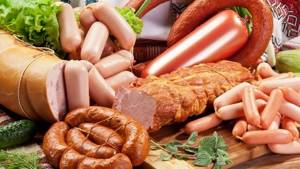
Pizza sauces and sausages contain a large number of dyes and chemicals harmful to the human body.
Advice! Pizza, prepared from start to finish at home, containing simple natural products, may well be included in the diet of a person seeking to diversify his menu.
It is recommended to put the following products in an open cake:
- chicken meat;
- egg;
- cheese;
- paprika;
- spices;
- tomatoes.
Then the calorie content of this dish will not exceed 200 Kcal, and such pizza will not be harmful to health. To reduce the calorie content of the flatbread, you can make the dough with kefir, adding soda to it for fluffiness. This will reduce the energy value of the pizza base to 200 Kcal. Vegetarian fillings will have a low energy coefficient, and this will allow you to create an individual recipe for a tasty and healthy dietary dish that will diversify a dull diet.
High calorie pizza toppings
To ensure that the cheese melts well, fatty varieties with a high calorie content are used. In restaurants, vegetables for filling can be pre-fried in batter. Fatty meats and fish also increase calorie content.
High-calorie foods used for cooking:
- high fat cheese;
- sausages;
- fatty fish;
- fatty meats;
- vegetables in batter;
- mayonnaise;
- mustard;
- ketchup.
Calorie content of different types of pizza
The calorie content of food is calculated per 100 g of product. But for pizza, this figure is also expressed for 1 serving (or 1 piece). On average, 1 piece weighs 80-150 g.
Calorie content and nutritional value of pizza per 100 grams
| Pizza | Proteins, g | Fats, g | Carbohydrates, g | Calorie content, kcal |
| 4 seasons | 11.6 | 9,4 | 22,9 | 219,0 |
| 4 cheeses | 12,2 | 28,2 | 17,4 | 320,0 |
| Vegetarian | 8,5 | 5,6 | 20,0 | 164,0 |
| Hawaiian | 10,5 | 3,4 | 35,9 | 216,0 |
| Mushroom | 8,5 | 8,2 | 22,4 | 192,0 |
| Country with chicken | 14,5 | 22,4 | 45,8 | 443,0 |
| Diablo | 9,2 | 12,6 | 25,1 | 240,0 |
| Carbonara | 11,0 | 8,0 | 37,0 | 264,0 |
| Margarita | 7,5 | 10,4 | 20,3 | 210,0 |
| Marine | 8,4 | 5,5 | 25,7 | 181,0 |
| Neapolitano | 11,0 | 5,0 | 24,0 | 228,0 |
| Pepperoni | 13,0 | 14,0 | 40,0 | 340,0 |
| With mozzarella | 9,7 | 13,8 | 24,4 | 260,6 |
| With salami | 9,0 | 9,0 | 33,0 | 249,0 |
The effect of proteins, fats and carbohydrates on the body
The process of losing weight should not be accompanied by deterioration in health, so restrictions in the amount of food and its calorie content must be compensated by proper quality. The importance of the presence of proteins, fats and carbohydrates in the diet is due to their effect on the body.
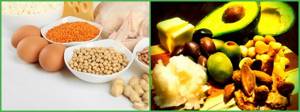
- Proteins are an essential element for gaining muscle mass, and their deficiency makes it difficult to break down fat tissue.
- An excess of fats, especially of animal origin, is the main cause of excess weight, but their lack is no less harmful, because fats are involved in the production of hormones, the absorption of fat-soluble vitamins and the functioning of the immune system. In addition, fats affect the condition of the skin, which is why it is so important for women to adhere to the minimum acceptable values for the consumption of this element.
- Reducing your carbohydrate intake is the fastest way to losing weight, but it is fraught with health problems. Eating carbohydrates found in vegetables and grains helps fight fat accumulation, while carbohydrates derived from sugar or flour, on the contrary, lead to excess weight.
The required daily amount of BZHU depends on many factors, for example, gender, weight, age and physical activity.
In addition, the ratio of BJU differs depending on the goal, for example, for weight loss, to maintain your weight or to gain muscle mass.
To select the correct percentage of BJU and correspondingly reduce calories, you can use an online calculator, where you need to enter your parameters and indicate the goal, in this case - weight loss.

The calculator will calculate the number of calories and the percentage of BJU in the diet, taking into account the indicator of physical activity, which depends on your lifestyle.
By adhering to the obtained values, you can adjust your diet to gradually reduce body weight.
However, to enhance performance, you need to pay attention to sports training, visit the gym or swimming pool, go jogging or cycling.
Bju for weight loss for a woman. percentage
At normal weight, the ratio of BJU is 30–40% proteins, 10–20% fats and 40–50% carbohydrates.
However, these values are not always suitable for weight loss, since they lead to insufficient protein intake and excess carbohydrates, which then manifest themselves in the appearance of fat deposits.
A lack of protein also does not have the best effect on your figure, because protein is necessary for the formation of muscle tissue and the normalization of metabolic processes.

Therefore, the following proportions of BJU are more suitable for weight loss: 40–50% protein, 10–15% fat and 30–40% carbohydrates. A correctly selected ratio of BZHU and calorie content of the daily diet will allow:
- provide the body with a sufficient amount of useful elements;
- maintain the balance of nutrients;
- get rid of feelings of hunger, lethargy and apathy;
- ensure steady weight loss.
How to calculate daily calorie intake?
There are several methods for calculating caloric intake, for example, the Mifflin-San Geor formula, which in the version for women looks like this:
((Weight in kg x 9.99) + (height in cm x 6.25) - (age in years x 5) - 161) x physical coefficient. activity.
This coefficient is determined as follows:
- with a sedentary lifestyle it is 1.2;
- insignificant physical activity, manifested in rare walks and irregular exercise, gives a coefficient of 1.4;
- if you visit the gym periodically (at least 2-3 times a week), the coefficient will be 1.6;
- daily intensive sports activities will allow you to count on the maximum coefficient value - 1.7.

- For example, let’s calculate the daily caloric intake for a 30-year-old woman with a height of 165 cm and a weight of 80 kg, with insignificant physical activity. The calculation will be like this:
- ((80x9.99) + (165x6.25) - (30x5) - 161) x 1.4 = 2130 kcal.
- However, to lose weight, the resulting figure must be reduced by 20%, so the caloric content of food in this example should not exceed 1700 kcal.
- There is another formula, the Harris-Benedict formula, according to which it is necessary to calculate the values of basal and active metabolism, and then multiply the resulting numbers.
- Basal metabolism is calculated as follows:
- (Weight in kg x 9.247) + (height in cm x 3.098) - (age in years x 4.33) + 447.593.
- The value of active metabolism is:
- with a sedentary lifestyle 1.2;
- at low and irregular loads 1.375;
- with mediocre physical activity 1.55;
- with intense activity 1.725;
- for athletes 1.9;
- for muscle building 1.2;
- for weight loss 0.8.
Let's apply this formula when calculating calories for the same conditional woman:
((80 x 9.247) + (165 x 3.098) - (30 x 4.33) + 447.593) x 0.8 = 1250 kcal - this is exactly how many kilocalories this woman should receive in order to get rid of extra pounds.
Calculation of BZHU
Knowing the calorie content of the daily diet and adhering to the recommended proportions of BZHU, you can calculate their exact amount. It should be taken into account that 1 g of protein and 1 g of carbohydrates contain 4 kcal, and 1 g of protein contains 9 kcal.
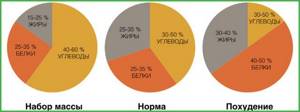
The calculated calorie content per day in our example is 1250 kcal. Half of them, about 600 kcal, should be provided by protein foods, 200 kcal by fats, and the remaining 450 kcal by carbohydrates.
Convert calories to grams:
- the amount of protein should be 600 kcal/4g = 150 g;
- fat in the daily diet should be about 200 kcal/9g = 20g;
- carbohydrates will be 450 kcal/4g = 110 g.
In order to correctly use the data obtained, you will have to study the packaging of each product in order to determine its calorie content and BJU content. This way you can adjust your diet to achieve your ideal weight.
Recommendations from nutritionists
The intake of proteins, fats and carbohydrates must be properly distributed throughout the day. To do this, use the following tips.
- For breakfast, eat carbohydrates - porridge, eggs, whole grain bread.
- Between breakfast and lunch, eat your favorite fruit, such as an apple.
- A healthy lunch should consist of soup, a meat or fish dish with a vegetable side dish.
- Afternoon snack is time for dairy products.
- For dinner, eat protein and fiber foods.
- A glass of kefir before bed will be of great benefit.

Don’t forget to control the amount of calories, go in for sports, and your figure will soon acquire the necessary slimness.
Have you heard about shiitake mushrooms and their benefits? I want to know more
Calorie content of homemade pizza
To reduce energy value, pizza can be prepared at home. For the base and filling, high-calorie ingredients are replaced with low-calorie ones. Baking without oil will also reduce calories.
For the dough, whole grain, oat or buckwheat flour, ground oatmeal or ready-made thin pita bread are suitable. You can replace the flour base with cottage cheese with eggs and grated potatoes. If the recipe contains oil, it is advisable to use cold-pressed olive oil.
The absence of mayonnaise, ketchup, and mustard will make pizza more dietary. It is better to use tomato paste, fresh tomatoes. It is not necessary to bake a dish with a cheese crust - you can use low-calorie cheese, for example, low-fat mozzarella.
Filling with fresh vegetables, mushrooms, seafood, lean fish, and meat will enrich the dish with protein, fiber, vitamins, and minerals. Fresh herbs are also useful - they will add nutrients and improve taste.
A home-cooked dietary dish contains 90-180 kcal per 100 g. But pizza with sausage, cheese and mayonnaise contains much more calories - 334 g per 100 g of product.
The benefits and harms of pizza
The beneficial and harmful properties of pizza depend entirely on its composition. At the same time, you can increase the positive qualities and reduce the negative ones by replacing some products in the recipe with others.
Benefits of pizza:
- Hard cheese contains a large amount of calcium, which is necessary for bones, teeth, nails, and hair.
- The use of wholemeal flour in the dough enriches the dish with antioxidants from the endosperm. It also helps the body cleanse the gastrointestinal tract of toxins and harmful substances.
- Fresh tomatoes contain lipoline, which is used as a prophylactic against diseases of the cardiovascular system and oncology.
- Seafood, meat and fish products enrich the dish with protein and nutrients.
- Vegetables contain fiber, which has a beneficial effect on intestinal function.
Pizza harm:
- Yeast pizza dough causes flatulence and bloating.
- High-calorie filling increases the energy value of the dish.
- Excessive consumption of this dish leads to weight gain and deterioration of the gastrointestinal tract.

